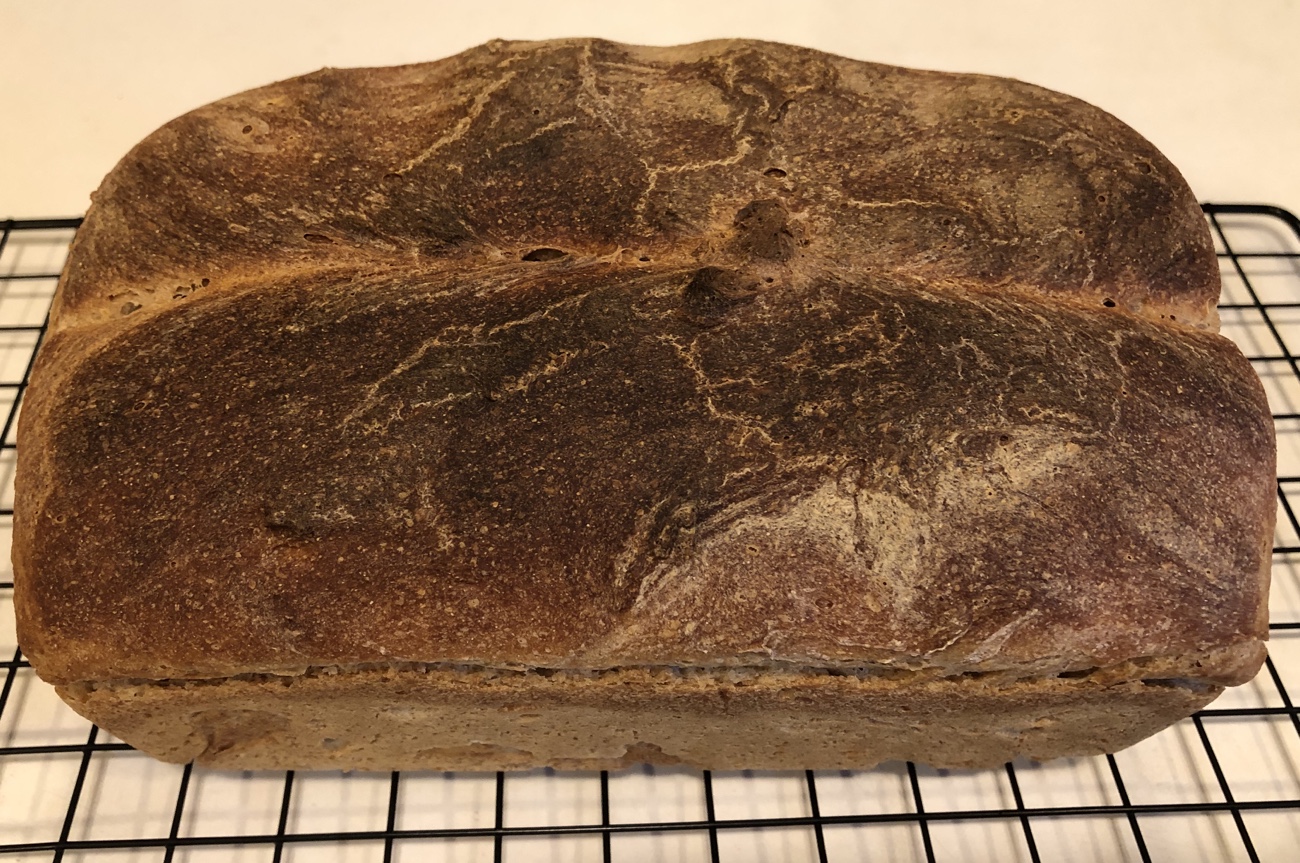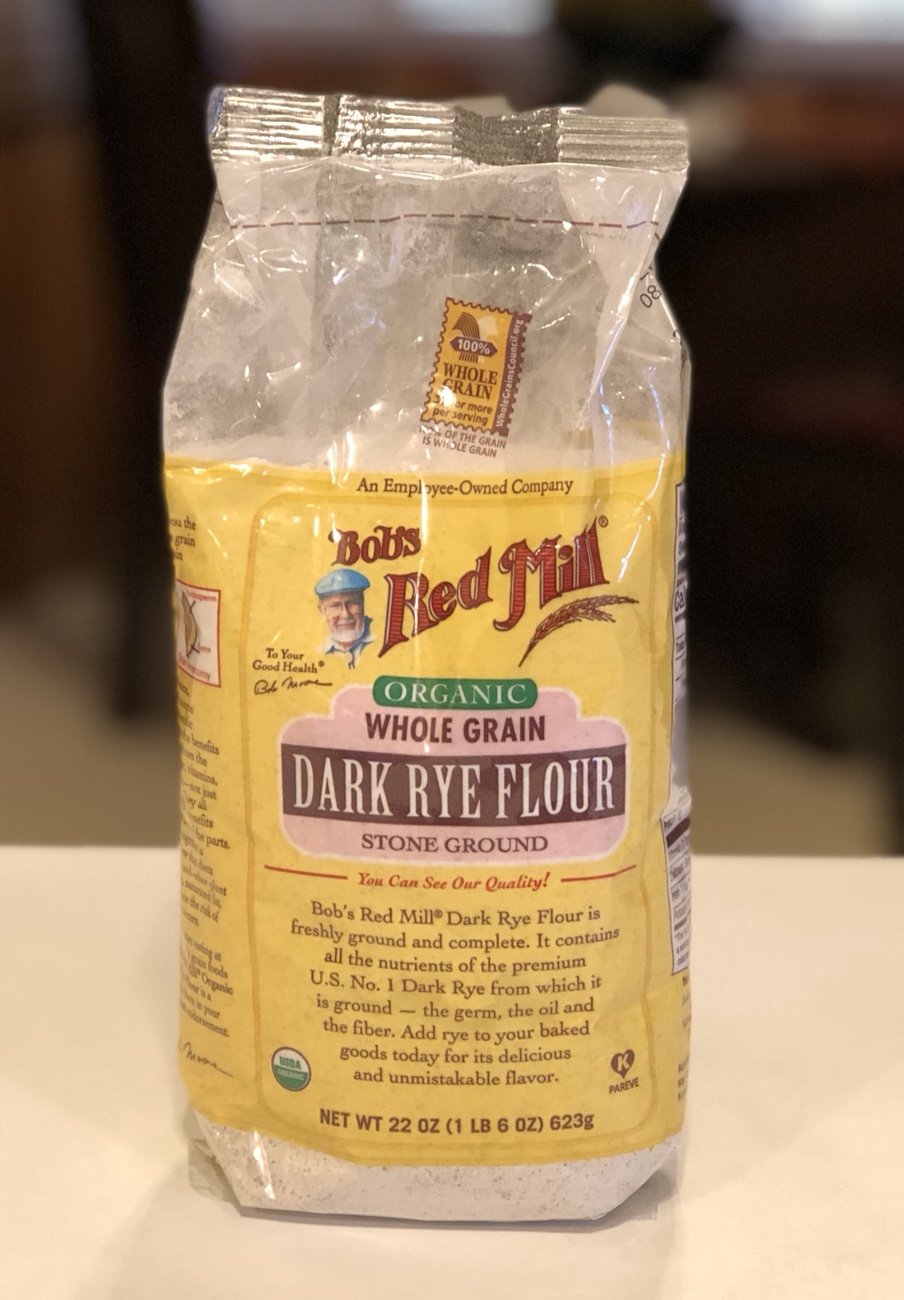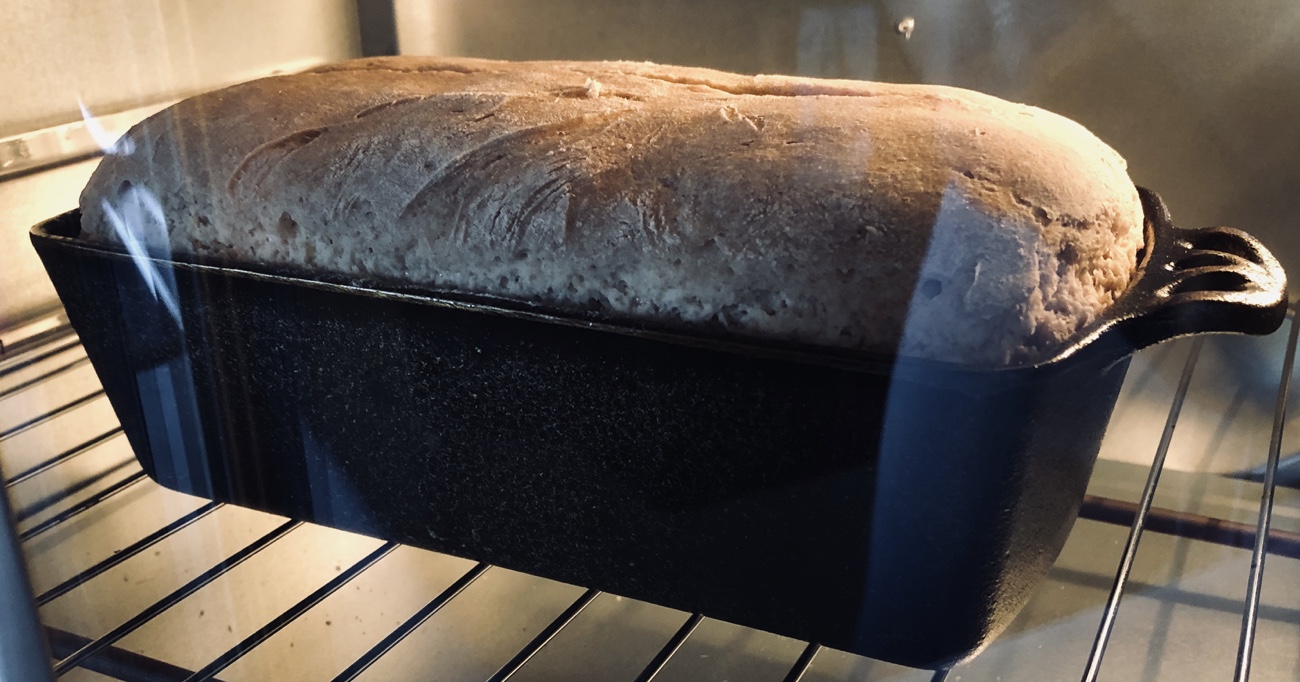
There’s something particularly alluring about a crusty brown loaf, especially if it’s fresh out of the oven and filling the kitchen with its seductive fragrance. It whispers softly, insistently, “come cut a piece”. I know it’s crusty on the outside and soft on the inside, and it’s all I can do to keep my hands off until it cools. Bread porn? Perhaps, but when Audrey makes a rye loaf, it’s irresistible.
It’s always amazing to see how flour influences the finished loaf. We typically feed Audrey the same flour that the loaves are made from, and the arrangement works well. Every once in a while, though, we like to mix things up and make a loaf with rye…because sourdough rye is delightful!

The rye flour turns a genteel loaf into something rougher around the edges. If you like a hearty texture and deep color, this is the loaf for you. While the crumb is still light, the texture is completely different, and much more substantial. Why? For a number of reasons, including rye’s low gluten content; gluten being the protein responsible for the dough’s elasticity and strength, and a critical determinant of how well a loaf rises. And we know that no one wants to pull a brick out of the oven…you know, one of those dense, hard, barely-risen loaves that looks more like a paver than that lofty bread you were hoping for.

Audrey’s rye loaf baked perfectly in the new cast iron loaf pan. Despite baking for the same amount of time, and at the same temperature as the wheat flour loaves we typically make, this rye loaf browned even better…so well, in fact, that I did a double-take when I first peeked at it in the oven, thinking it was getting burned on top. It definitely was not burned – the darker color is just due to the rye flour. The top of the loaf also has this striking naturally-created pattern that just oozes rusticity and demands to be paired with a hearty soup, like borscht or Portuguese kale soup. Or just some butter.

As this Cultures for Health article describes, this is a loaf that doesn’t require kneading (but we like to knead it a little, anyway), and scraping it directly from the stand mixer bowl into the waiting cast iron pan is very convenient. Depending on the weather, it can be a slow rise, but it’s worth the wait. Who am I kidding? Audrey’s loaves are always worth the wait!

Comments are closed.